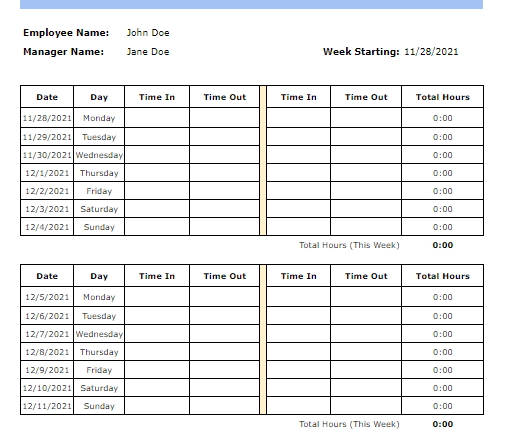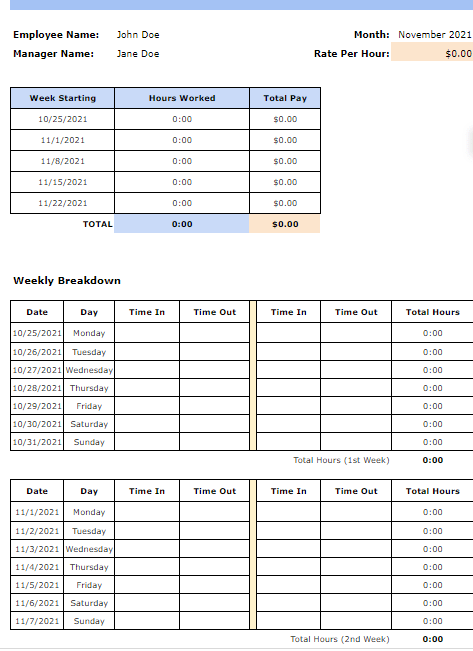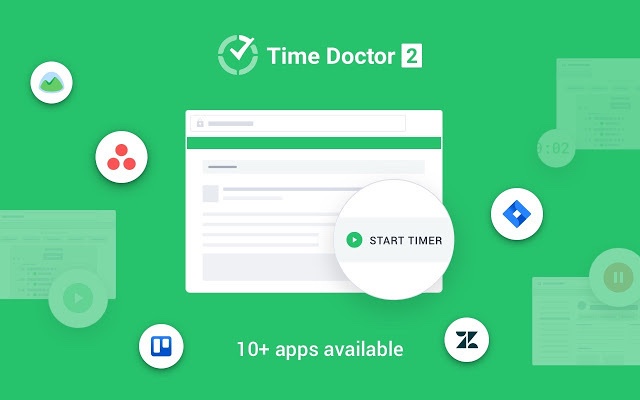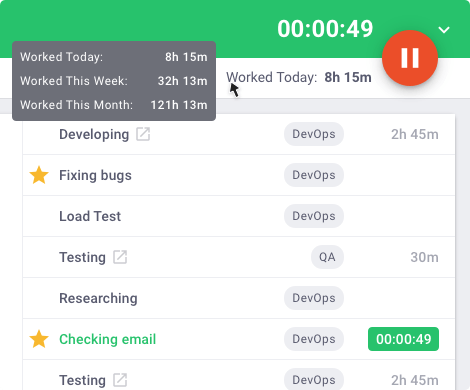 google sheets time card template" width="1170" height="658" />
google sheets time card template" width="1170" height="658" /> google sheets time card template" width="1170" height="658" />
google sheets time card template" width="1170" height="658" />
Tracking employee work hours is an integral part of most businesses. It helps you analyze employee productivity and even pay your hourly employees accordingly.
And one way to track employee time is to use a spreadsheet tool like Google Sheets.
With a Google Sheets time card template, you can keep track of what tasks an employee works on in a given period and the time taken for each task.
In this article, we’ll share four downloadable templates and discuss the benefits and drawbacks of using Google Sheet time card templates. We’ll also explore a better way to track employee hours accurately.
(Click on a link below to jump to a specific section)
Let’s get started.
A time card is used with a time clock to record an employee’s clock-in and clock-out time. Traditionally, a time card was a sheet of paper with data arranged in a tabular format.
Today, each time card usually contains the following information:
The data collected can be utilized for payroll purposes, calculating billable hours, project accounting, and many more.
In this section, we’ll explore the different types of free time card templates you can use for your team.

You can use this simple timecard template to track the work hours of multiple employees. An employee can record their clock in and out time into the timecard every half an hour.
It’s useful for companies and startups looking to pay their employees at an hourly rate.

Ideal for tracking employee work hours on a weekly basis, you can use this template to pay employees or freelancers every week.

Perfect for paying freelancers bi-weekly, this template records clock-in and clock-out times every two weeks.

Useful for calculating employee working hours on a monthly basis, this template can help you manage the payroll of your salaried employees.
You can install Google Sheets for free as part of Google Workspace. It also includes other tools like Google Docs, Google Drive, Google Form, etc.
Here, we’ll take a look at some of the advantages of the Google Sheet time card.
Employees are being tardy when they are deliberately arriving late for work or don’t start work at the right time.
If one of your employees is intentionally arriving late at work, others in your company will start to notice, and it will create some friction among your team members.
By using a time card template, you can ensure that your employees are punctual and productive as you can record their clock in and clock out times.
Due to the high flexibility of Google Sheets, you can use it to create a weekly or monthly time card system customized according to your business requirements.
You can also modify it according to your needs without any professional assistance.
For example, if you want to include a row or column for “sick leave,” you can do it in minutes. Such a level of flexibility reduces the amount of time a manager spends on team management.
Since Google Sheets is a cloud-based solution, it is easily accessible irrespective of your time and location.
After creating a time card of your team members’ work hours, you and your employees can easily access it from a mobile device or a laptop in real-time.
This kind of accessibility makes the Google Sheet time card ideal for people who add time data on the go.
Google sheets are highly compatible with tools like Trello, Clockify, and other workplace software. This allows you to use them simultaneously without switching tabs.
Additionally, whether it’s an Excel sheet or Google Sheet, a spreadsheet provides a good deal of analytics and business intelligence solutions. However, it’s not surprising since these tools are designed for these purposes.
Using such tools lets you automate multiple tasks related to time counting, adding overtime, payroll, and invoicing. This can help the management make more informed decisions based on employee behavior data.
A Google Sheet time card is convenient to use because of its user-friendly interface.
Most of your employees might already be familiar with a Google Sheet-like spreadsheet software, most notably – Microsoft Excel or Microsoft Word. For this reason, your employees might need little to no assistance getting acquainted with your time card software.
Next, we’ll look at some of the disadvantages of using a Google Sheet time card.
Here’s a detailed look at why tracking hours on Google Sheets is not ideal for your business:
It is extremely time-consuming to track time using Google Sheets timesheet as it can take hours to finish adding data on a timecard and verifying it.
To track time using Google Sheets, you have to:
Entering data of urgent meetings or lunch breaks on a spreadsheet can be tedious. It can cause errors, leading to a loss of employee productivity.
Recording data like meetings or brainstorming sessions can be beneficial to a project, but they are very difficult to track accurately.
For instance, if six of your employees join a client meeting for one hour, will you bill the clients for one hour or six hours?
Things like this could lead to confusion and may cause conflicts among team members.
Health concerns or personal life issues may cause an employee to underwork for a period of time. This can cause them to panic as they will try to make up the time by fudging data (also known as time theft).
For example, your employees would hesitate to report their real work hours if they have taken more than an acceptable amount of time to finish a task.
A Google Sheet time card will only give you access to start and end times on a particular day or project.
It doesn’t give you insight into employee productivity or time wastage data. For instance, you will not know if your employees were working on a project or using some other app or website during that time.
Although a Google timesheet is beneficial for small businesses, it can hinder your company’s growth if you’re looking to scale.
Your team members have to spend a great deal of time gathering and arranging time entries, generating timesheet reports, and doing other timesheet-dependent activities. This will waste your employee’s time and energy, decreasing productivity and harming your profit margin.
Considering these factors, it’s not advisable to use Google spreadsheets to record your employees’ working hours. Fortunately, you can use a superior alternative.
Google Sheets is a popular timesheet tool among companies due to its intuitive user interface.
However, things like lack of productivity reports and the potential for inaccurate entries make a Google spreadsheet an ineffective timesheet option.
Fortunately, you can use a much better alternative like Time Doctor for tracking hours with detailed analytics.

Time Doctor is a robust employee time tracking and performance management tool used by major companies, like Verizon and Ericsson, as well as small businesses, like Firehouse Subs, to boost employee productivity.
It has a simple user interface and workforce management features, making it suitable for remote teams.
Let’s take a look at some of Time Doctor’s key features:
Time Doctor offers two types of time tracking methods — automatic and interactive.
In the interactive mode, employees can start the timer manually when they begin working on a particular task and stop it as per their needs.
In the automatic time tracking mode, Time Doctor starts monitoring the time as soon as your employee turns on the computer. By doing this, your employee won’t forget to turn on the timer every time they start a new task.

Time Doctor allows you to see if your employees are idle or productive while working on a task or project.
If an employee does not indulge in any keyboard, mouse, or computer activity for some time, Time Doctor automatically sends a pop-up notification.
Note: Time Doctor isn’t a keystroke logger. This time tracking software will only check if an employee pressed any keys or mouse buttons to calculate idle time.
With the help of the screencasts feature, you can check whether your team members are working on a particular task or not.
Additionally, since your employees are aware that their screen activities are being monitored, they are less likely to engage in distracting activities.
With the help of Time Doctor, you can access comprehensive real-time reports to understand employee performance.
These reports include:
As a result, it provides an accurate timesheet for each employee, logging in their hours on individual projects and tasks.
By contrast, you have to manually create these reports in a Google timesheet by collecting all the data and organizing it.
The app lets you set different productivity ratings for different sites, depending on their type of work.
The different productivity ratings are:
For example, Reddit can be classified as productive for a software engineer who’s posting solutions in the Reddit product forums.
Along with time tracking and extensive productivity reports, Time Doctor also provides you with payroll management features.
You can pay your remote employees via Paypal, Gusto, ADP, or Wise.
Customize the payroll feature by:
You can use Time Doctor’s powerful Chrome Extension to integrate it with other productivity apps like Slack, Asana, and Evernote.
With this feature, your employees can use the Time Doctor button to track time on various apps helping to create an accurate employee timesheet.
Wrap up
Although Google Sheets can provide basic features, it was not designed to be used as a time card or an online timesheet.
So, if you want an easy-to-use, accurate timesheet tool that also offers detailed productivity insights, Time Doctor is your best bet. From time-tracking to payroll management features, Time Doctor is the ideal alternative to Google Sheets time tracking.